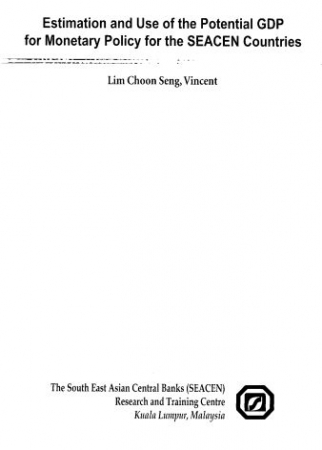The objective of this project is to review methodologies of computing the potential output gaps; to survey of international best practice with respect to the estimation and utilisation of potential output and output gap measures; and to identify weaknesses and strengths of the respective methodology. From the literature review it is obvious that different approaches and estimation techniques can lead to different estimates as potential GDP is unobservable. It is difficult to know which technique performs better. The unobservable characteristic also implies that it is not possible to know precisely the statistical errors of these estimates. Furthermore three types of errors are possible – statistically uncertainty; inadequacy of the model and errors due to the revision to the real time estimates as a result of new data arrival. Noise introduced into the models as a result of supply shocks would also make the estimation of potential GDP difficult. The objective of this project is to review methodologies of computing the potential output gaps; to survey of international best practice with respect to the estimation and utilisation of potential output and output gap measures; and to identify weaknesses and strengths of the respective methodology. From the literature review it is obvious that different approaches and estimation techniques can lead to different estimates as potential GDP is unobservable. It is difficult to know which technique performs better. The unobservable characteristic also implies that it is not possible to know precisely the statistical errors of these estimates. Furthermore three types of errors are possible – statistically uncertainty; inadequacy of the model and errors due to the revision to the real time estimates as a result of new data arrival. Noise introduced into the models as a result of supply shocks would also make the estimation of potential GDP difficult.
-
About Us
-
Events
-
Publications
-
About The SEACEN Centre
-
The Centre's Governance
-
Courses

